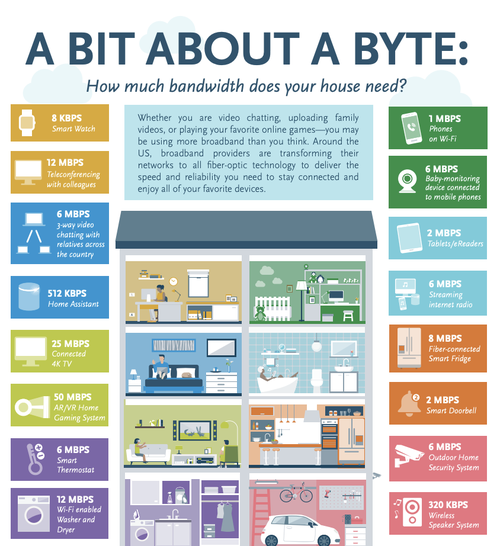Special Reports – Covid-19 Industry Impact
March 29, 2020
1. How will Covid-19 impact 5G?
2. Coronavirus and connectivity
3. Who is set to benefit from the COVID-19 outbreak?
4. Companies that could grow during COVID-19
5. Covid-19 industry impact: LIVE

How will Covid-19 impact 5G?
Covid-19 (coronavirus) is already having an impact on all of our lives.
Mobile technology will help to get us through this whether that be from supporting health services, allowing more people to work remotely or simply providing a link to the outside world for people self-isolating. That said, for the average consumer priorities have clearly changed. With the epicentre of the crisis now in Europe, many potential early adopters of the latest technologies will now need to concern themselves with their financial and personal wellbeing rather than the latest handset.
This year is already shaping up to be a bad one for everyone, but what does it mean for 5G vendors, operators and users? How will the crisis affect national rollouts and what should we expect to see in the future?
Consumer interest in 5G will decline
GSMA Intelligence’s consumer survey found the majority of respondents in most markets had limited interest in upgrading to 5G…yet. This was most apparent in Europe, where nearly 80 per cent of consumers in the UK did not plan to upgrade, while many in France and Germany were not even aware of the technology.
In the current environment, where consumers and enterprises are worrying about their financial future, sentiment is unlikely to improve. Ipsos data showed 37 per cent of US consumers now believe the coronavirus will have an impact on their personal finances. The factor is even more pronounced in other key 5G markets: in Japan the figure was 56 per cent; with Australia at 40 per cent; and Italy 41 per cent.
Coverage and device availability will continue to be a barrier as rollouts are delayed
5G has been launched in nearly 30 markets across the world. Yet, in most cases, coverage has been limited to small, densely populated areas. Operators in early adopting markets had planned to spend the next two years expanding and densifying networks. Meanwhile, 2020 should have been the year of the 5G smartphone.
5G is a powerful soldier in the war on the coronavirus
A crisis can be a driver of technological advancement and despite the challenges facing the industry, 5G is in some cases already proving its worth.
In Wuhan, for example, Huawei installed a 5G network in a specialist hospital in three days: 5G-enabled robots can now help to take care of patients in the hospital and take measurements, reducing the amount of time medical staff need to spend with infectious patients. Additionally, specialists are using 5G to control medical equipment in distant centres across the country, allowing them to remotely diagnose new cases and support local physicians.
More broadly, for the millions of people now in isolation, internet connectivity is allowing work to continue without the need to go into the workplace. While working from home has been an option for office workers for some time, 5G can provide a far better experience for virtual meetings and, of course higher network capacities, making it an important tool in simply keeping up with new traffic demands.
The outlook for the future
The Covid-19 epidemic is a great, but not insurmountable challenge for the industry. We are seeing this already as operators move forward on their 5G plans. In Japan, for example, NTT Docomo will this week become the first operator to introduce mobile 5G to the market, with KDDI and SoftBank not far behind.
Elsewhere, China Unicom and China Telecom plan to reach their 250,000 5G base station target in Q3, earlier than their original plan. In the US, the National Association of Tower Erectors (NATE) say tower construction is continuing without major disruption.
Governments have already shown their willingness to invest as they strive to avoid a major recession, and covering underserved areas is seen a priority for many countries. The UK government for example, agreed in October 2019 to invest £500 million into a project ensuring at least 4G coverage for 95 per cent of the country. With the GSMA predicting 5G will contribute $2.2 trillion to the global economy between 2024 and 2034, this could be a great time for governments to invest in the technology.
Read more.
Coronavirus and connectivity
With the worldwide spread of COVID-19, we’re facing unprecedented circumstances. The pandemic is forcing us to restructure education, businesses and the global economy entirely. As we practice social distancing and self-quarantine, the only way to maintain a semblance of normalcy is to connect online. And that is only possible with the correct devices and the most reliable broadband at home.
Our new culture of remote connectivity exposes, more than ever, the need for increased capacity. As more and more institutions move work and school online, we have started to see older networks strain to support the massive amounts of traffic. With everyone working and learning from home all at once on a DSL or satellite network, the amount of available bandwidth becomes a huge concern.
Consider all of the connected devices in a home – smartwatches, tablets, smartphones, baby monitors, smart doorbells, smart fridges, home assistants, connected TVs, Wi-Fi enabled washers and dryers, and smart speakers. Now layer those with the bandwidth-hungry applications that remote work and distance learning require during this COVID-19 crisis. Our recent research shows that the average US household could require as much as 100 Mbit/s of bandwidth:
Read more.

Who is set to benefit from the COVID-19 outbreak?
For millions of individuals and businesses, the threat of COVID-19 is financial ruin, but there are parts of the technology industry that are benefiting from the considerable changes forced on society.
The FTSE 100 Index is likely to close below 5,000 today, a 27% decline in a month, while the Dow Jones is currently down (at the time of writing) 31% over the same period. Economies around the world are being hit disastrously hard, but some will see gains out of this pandemic at least temporarily, if not permanently.
Cloud Computing
The cloud computing segment has been on the rise for years, though as more employees find themselves restricted to their homes more workloads will have to be migrated to the cloud to ensure the business can function as usual.
For the cloud companies, the coronavirus outbreak is effectively forcing some organisations through a very rapid digital transformation project, to embrace the cloud and mobility trends. From an IaaS perspective it means more money, from SaaS it means more engagement and PaaS more opportunity.
Amazon Web Services, Microsoft Azure and Google Cloud are the obvious beneficiaries as market leaders, though for companies like Oracle, who might be working with more traditional industries that have resisted evolution to date, new conversations about enabling the workforce will have to occur.
Interestingly enough, once these businesses have begun their journey towards a cloud-based business model and environment, it is highly unlikely they will go into reverse. This could be a catalyst for accelerating the already fast-blossoming cloud segments.
Video conferencing and collaboration
Although there is no substitute for a face-to-face meeting to progress and complete complicated projects, alternatives have to be sought today. Many businesses are encouraging more meetings to be conducted via video links rather than email to not only ensure effective communication but ensure well-being of employees. Contact with colleagues via video link is not perfect by any stretch, but it might assist some who are feeling the loneliness of remote working.
Microsoft is an obvious beneficiary here, it announced last week the number of daily active users for its Teams collaboration suite increased by 12 million, though there are many others who are financially better off also.
Zoom Video Communications, a remote conferencing services company headquartered in San Jose, has seen share price increase 130% since the beginning of the year, while more marketers are turning to companies like ON24 to purchase webcasting and webinar services to ensure lead generation projects can continue.
As mentioned above, some companies are being forced into a digital transformation project meaning some of the remote working capabilities might be retained in the long-term, but virtual alternatives are never going to be a complete replacement for face-to-face meetings, where we can subconsciously pick up non-verbal communication cues so easily.
Read more.
Companies that could grow during COVID-19
Covid-19 or the coronavirus is impacting our economy, however not every company is being hurt. In fact, several industries are showing strength and even growth during this crisis. Let’s take a look at a few companies in the telehealth, cleaning supplies, wireless, telecom, pay TV, Internet and other sectors.
Long-term, I think this sudden work-from-home trend we are witnessing will continue even after this crisis is past. In fact, we may do things differently going forward. Companies will want to prepare for the next similar crisis, and we will settle into a new way of thinking about work.
That’s why some companies in these spaces will do well going forward.
Longer-term, I think we will find communications companies seem to be among the winners. Any service or product that keeps us connected to the outside world should continue to be strong and grow.
The reason is simple… people are stuck at home and need distraction, interaction and a way to work from home. Going forward, these tools will be in higher demand than ever before. That means wireless, telecom, pay TV, Internet, TeleMedicine and more.
Wireless carriers like Verizon Wireless, AT&T Mobility, T-Mobile are strong players
Wireless carriers like AT&T Mobility, Verizon Wireless, T-Mobile and Sprint are one core way of keeping in touch with the outside world from our homes, cars or wherever we are. Over the years, many users have already cancelled traditional landline phones and moved to wireless anyway.
Wire line telephone, either traditional telephone service or Voice Over IP or VoIP. This is a line that connects to the house. There are many companies in this area. Traditional phone companies offer telephone lines and VoIP lines. While traditional phone lines are no longer a growth engine, VoIP lines are and new services like video calling will grow as well.
Read more.
Covid-19 industry impact: LIVE
Mobile World Live is tracking the ongoing impact of Covid-19 (coronavirus) on the industry: this concise blog will be updated daily as we track how operators and major players are adapting to, and helping tackle, the spread of the virus.
Read more.
